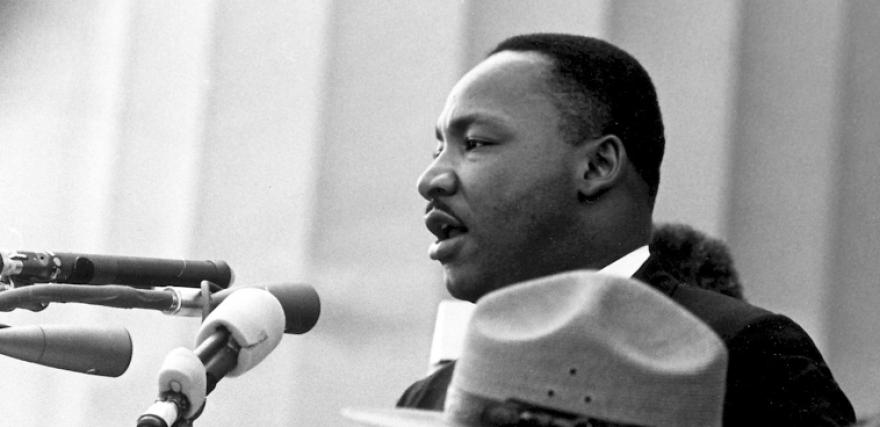Sign up for SmartBrief on Leadership today for free.
We’re all familiar with Martin Luther King Jr.’s “I Have a Dream” speech. But did you know he almost didn’t say those infamous words?
The day before the speech, King and his advisers had gathered at the Willard Hotel in Washington, D.C., to come up with a final draft. In his sermons, King usually stitched together various pieces from his repertoire on the fly. But this speech was different — it was a big occasion, the March on Washington, and he needed to make sure he got it just right.
He and his main writer, Clarence Jones, had drafted a passage saying how Black Americans had been issued a “bad check” in the Constitution and that the U.S. needed to cash in its long-awaited promissory note. Jones urged him to also use the phrasing, “I have a dream.” But other advisers were less in favor of the phrase, and with King limited to five minutes, there wouldn’t be time enough for both. King wanted to respect the requested time limit, even though he would be speaking last.
The debate continued, as told by Sports Illustrated in 2015, and ultimately a final draft of three pages was produced by King. The speech, on paper, did not contain the words “I have a dream.”
But at the podium, as King approached the culmination of the speech, he made a split-second change. His voice boomed out, “I have a dream!” before the enormous crowd.
He’d intended to cap the speech by urging the audience to “go back to our communities as members of the international association for the advancement of creative dissatisfaction.” But in the moment, it didn’t feel right, and he paused. Then, Mahalia Jackson, the legendary gospel singer, called out, “Tell them about the dream, Martin!” He looked at her, then slid his written speech off to the side.
As his improvisational genius took over, he unleashed his “I have a dream” closing, which lasted just two minutes and 40 seconds but would inspire generations to come.
While we obviously don’t all have King’s oratory prowess, one lesson we can take here is to stay in tune with our audience and trust ourselves in the moment. Great leaders intuitively read the room, knowing what their audience needs to hear.
That’s exactly what King did in his “I Have a Dream” speech. He recognized that the words he’d prepared weren’t what the audience needed to hear, and he instead delivered a speech that would go down in history.
Joel Garfinkle provides corporate training, webinars, and executive coaching. He is recognized as one of the top 50 coaches in the U.S. He has worked with many of the world’s leading companies, including Google, Amazon, Starbucks, Deloitte, Eli Lilly, the NBA and The Ritz-Carlton Hotels. Garfinkle is the author of 11 books, including “Getting Ahead.” More than 10,000 people subscribe to his Fulfillment@Work newsletter. If you sign up, you’ll receive the free e-book “41 Proven Strategies to Get Promoted Now!” You can view his video library of over 150+ easily actionable 2-minute inspirational video clips at his You Tube Channel.
If you liked this article and video, sign up for SmartBrief’s free email newsletter on leadership. It’s among SmartBrief’s more than 250 industry-focused newsletters.
